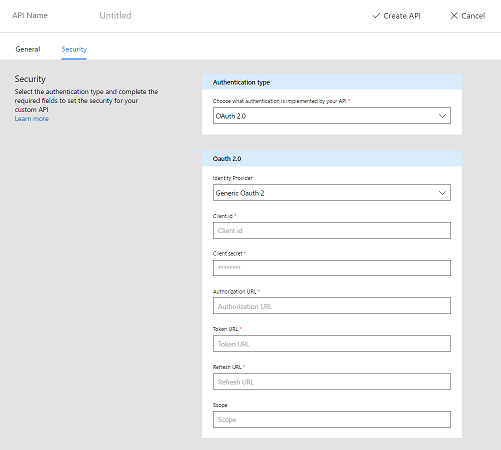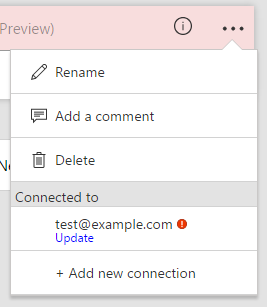Early October updates for Microsoft Flow
In the past two weeks we've introduced a few new features to improve the connectivity and power of Microsoft Flow.
Custom APIs support more authentication types
Custom APIs are the way to extend what Microsoft Flow connects to (beyond our built-in connections). You can use Custom APIs to create flows that talk to almost any HTTP endpoint that supports JSON. However, getting authentication to work with Custom APIs can sometimes be a challenge. This is now easier with our improved custom API experience:

First, custom APIs now support API Key authentication. This means you can define a header or a query string that will be sent on all of the requests to your API. Second, Custom APIs now can authenticate against any service that supports the full OAuth 2.0 specification. This requires you to provide:
- Client ID
- Client secrete
- Authorization URL
- Token URL
- Refresh URL
- Scopes
Read more about Custom APIs here.
Three new services supported
We've added support for three new services:
- Basecamp 3 – a tool that helps teams work together. It provides a dashboard to manage all messaging, document collaboration, scheduling and task management together in one place.
- Blogger – a blog publishing service. It allows you to create websites and post to them on an ongoing basis.
- PagerDuty – a help desk tool used to manage and dispatch service requests within support teams.

Designer improvements
One of our focuses in the past few weeks has been to improve the performance of the flow designer. Creating and editing flows should now be much faster and smoother than it was before.
Second, you can now update and repair your connections right from the "…" menu for every action. This is much faster than going to the connection management page:

Third, we have added a new step called Terminate that you can use to end a flow's run. This will be useful when used inside a condition, for example, you can do a series of checks and only continue the workflow if all of these pass. Finally, when you are looking at the run history of a flow there is a convenient Edit button that takes you directly to the flow designer.


